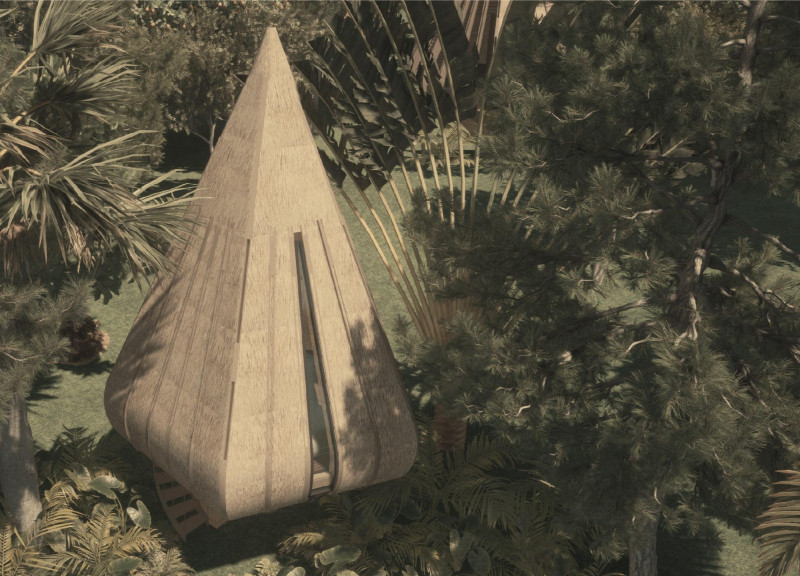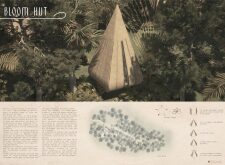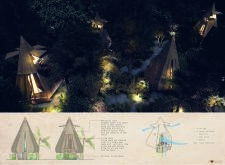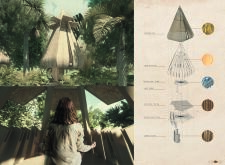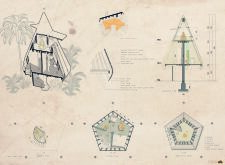5 key facts about this project
The Bloom Hut is set in a calm rural area surrounded by mountains. It serves as a retreat aimed at relaxation and mindfulness, designed to help guests connect with nature. The design draws inspiration from the lotus flower, a symbol of personal growth and enlightenment, which informs both the structure and purpose of the space.
Conceptual Framework
The concept reflects the journey of self-discovery associated with the lotus flower, significant in yoga and Buddhism. The design embodies themes of transformation and mindfulness. It helps users navigate their own paths toward self-reflection, akin to how the lotus rises from the water.
Spatial Configuration
The structure features two distinct levels, each with specific purposes that support mindfulness practices. The upper module functions as a meditation space, complete with five foldable wooden panel windows. These windows provide a 360-degree view of the landscape and allow natural light and air to flow in, creating a peaceful environment. The lower module serves as the living area, offering various levels of privacy and connection to the outdoors.
Sustainable Practices
Sustainability plays a crucial role in the construction of the Bloom Hut. The design uses thatch panels, which are manually installed to reduce the need for heavy equipment. This approach minimizes environmental impact and ensures that any damaged panels can be easily replaced, supporting a sustainable lifecycle for the building.
Architectural Form
The Bloom Hut's shape is a pentagonal volume inspired by the five senses, providing a unique spatial experience. This configuration encourages interaction with the natural surroundings. The foldable windows enhance the functional aspects of the space and create a stronger connection between the inside and the environment outside, allowing nature to play a role in daily activities.
The Bloom Hut presents a thoughtful integration of nature and design. Its features create a setting that fosters clarity and introspection, inviting users to explore their inner selves amid the tranquility of the landscape.


